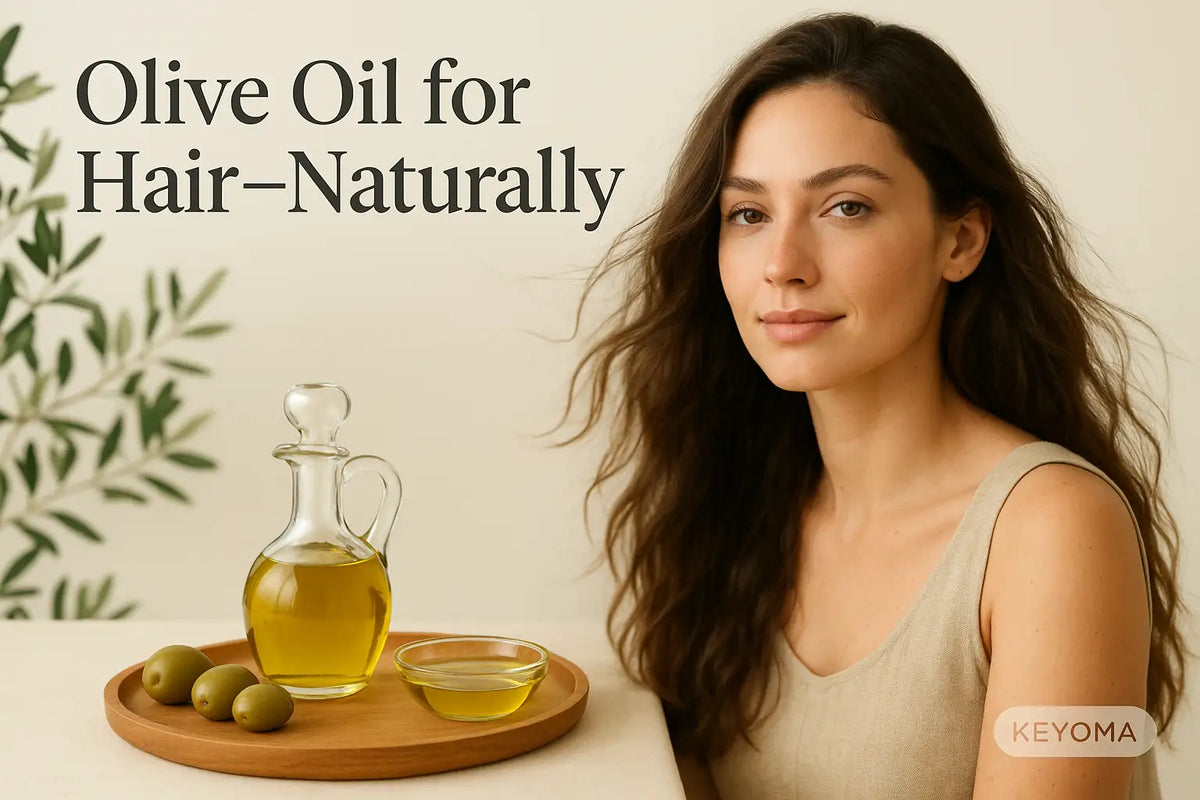In this article
Thinking about working olive oil into your hair routine? With so many claims about everything from split ends to hair loss, it’s simple to get swept up in the buzz. What actually happens when this kitchen staple meets your strands?
Olive oil has roots in ancient civilizations, and today you’ll find it in plenty of modern formulas. Is it the cure-all some promise, or does it play a more modest role? Knowing the difference can help you shape a smarter hair care plan.
Key Takeaways
-
Olive oil contains emollients that can penetrate hair, preserve moisture, and add softness.
-
Evidence for hair benefits remains limited, though some research shows significant moisturizing effects.
-
Typical use involves small measured amounts, scalp massage, brief occlusion, then thorough shampooing.
-
Potential drawbacks include buildup, worsened dandruff, difficult removal, and issues for fine, oily hair.
How to Use Olive Oil in Your Hair Routine
Research is still limited, but olive oil may help with moisture retention and strength. It often suits thicker textures best.
People have leaned on olive oil in haircare for centuries, crediting it with shine, body, softness, and resilience.
Its main components are oleic acid, palmitic acid, and squalene. These emollients help soften, which is why many shampoos, conditioners, and pomades use synthetic versions.
There isn’t a lot of strong data behind olive oil in haircare, but some research shows a notable moisturizing effect.
By moving into the hair shaft, olive oil can boost softness and help lock in moisture. The glossy look many notice likely comes from smoothing the cuticle.
You may need a bit of trial and error to dial in a routine that fits your hair. If you’re new to using olive oil as a conditioner, start here.
1. Measure the Amount
First time trying olive oil as a treatment? Begin with a tablespoon or two.
How much you use depends on your goals and where you apply it. For ends only, a tablespoon is enough.
If you’re treating your whole head, plan on at least 1/4 cup of olive oil, especially if your hair is long or very thick.
2. Massage Into Hair and Scalp
Work the oil through your hair for several minutes. You can also massage your scalp if you have a dry scalp.
For deeper conditioning, cover your hair with a shower cap and let the oil sit for 15 minutes or longer.
3. Rinse and Shampoo Thoroughly
Use a wide-toothed comb before shampooing to detangle and make post-wash styling easier.
Shampoo thoroughly and dry your hair to check results. You may need two washes depending on how much oil you used.
Conditioning with olive oil usually isn’t harmful. For me, a weekly treatment kept buildup manageable and my scalp comfortable. Unless your hair is very dry, stick to once a week or even less.
Benefits of Using Olive Oil on Your Hair
Olive oil is rich in emollients that move into the hair shaft and help seal in moisture. You get softer strands, a smoother cuticle, and a bit more shine, especially if your hair runs dry or thick. I notice the most slip when I use a small amount on damp mid-lengths and ends before shampooing.
Protects Against Sun Damage
Olive oil contains antioxidants such as vitamin E and phenol alcohols. These compounds can help protect hair from the sun's ultraviolet rays, which may otherwise leave hair feeling rough, weak, dull, and dry.
Fights Fungal Overgrowth
Olive oil may have antifungal activity. Research suggests it can slow the growth of candida albicans, a fungus that may cause scalp yeast infections when it overgrows.
May Help Manage Scalp Psoriasis
Psoriasis is a chronic immune condition that speeds up skin cell turnover and leads to scaly, dry, itchy patches on the scalp and elsewhere. Olive oil may soften and loosen built-up scale, according to the Psoriasis and Psoriatic Arthritis Alliance.
However, we have so many good medications for psoriasis these days. So using olive oil is not really recommended as a sole agent. It might be helpful to use in addition to some other medications.
Possible Side Effects When Using Olive Oil on Hair
Olive oil can be helpful for some, but it isn’t a match for everyone. Keep these possible downsides in mind:
Scalp Buildup and Clogged Follicles
Because it’s a heavier oil, it may collect on the scalp and clog follicles, especially if your hair is fine or your scalp is naturally oily.
Worsening of Scalp Conditions
If you deal with seborrheic dermatitis or dandruff, olive oil could feed the microorganisms behind these issues and aggravate symptoms.
Can Worsen Certain Scalp Conditions
It can be stubborn to rinse out completely, and multiple shampoos might strip your hair of its own oils.
Not Ideal for Every Hair Type
Skip olive oil treatments if you have fine or oily hair, conditions like seborrheic dermatitis, or if you’ve reacted to olive oil before.
Always patch test a small area of scalp first. Stop using it if you notice irritation or worsening of any hair or scalp concerns.
Use Olive Oil Safely Today With Keyoma Guides
Olive oil can soften hair, add shine, and help lock in moisture, but it works best on thicker or drier strands. Start with small amounts, focus on mid-lengths and ends, and shampoo well to prevent buildup. Patch test first, and avoid use if your scalp is oily or you have seborrheic dermatitis.
For clear routines, product tips, and research updates, follow Keyoma’s blog and social channels for ongoing hair care guidance.
Featured Product
100% Pure Batana Oil + Rosemary









